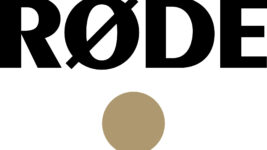ROAD TEST
11 Nov 2024
Shure MoveMic Two Receiver Kit
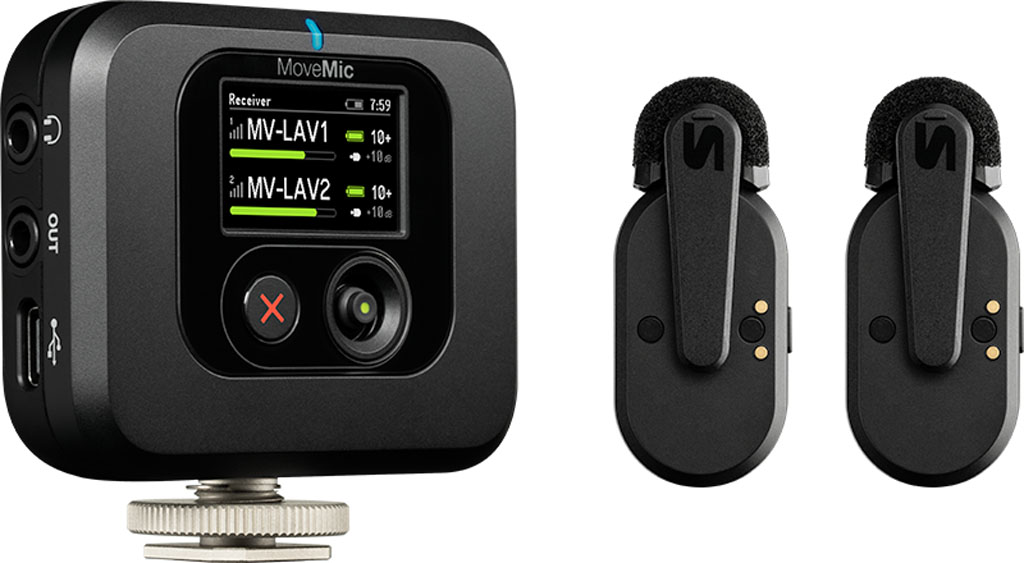
Subscribe to CX E-News
As the editor and publisher of CX, I don’t normally do Road Test reviews – I leave that to ‘proper’ working technical professionals. But when the opportunity came up to solve one of my enduring problems, capturing audio for video in the field, I jumped at the chance to make my life easier.
Enter the Shure MoveMic Two Receiver Kit. It’s the ‘full’ version of the Shure MoveMic ecosystem. Shure’s clip-on MoveMics are small, all-in-one mic and transmitter units that output an implementation of Bluetooth Low Energy with some proprietary control mixed in. You can use the MoveMics on their own and directly connect them to your phone using the free MOTIV Audio app or MOTIV Video app. Through the audio app, you can adjust gain settings, EQ, HPF, compression, noise reduction, save presets, and record audio.
Through the video app, you can record, or stream live.
Sonically, the mics are running at 48kHz and are an omni capsule. They respond down to 50Hz and are the equal sonically of any quality but affordable lavalier I’ve ever used. They are, however, much easier to fit – they simply clip on – no lead to thread through those lavailer clips that always befuddle me. They are also much better at staying out of the way of collars, hair, jewellery, and all of the other things on your interviewees that can ruin a recording.
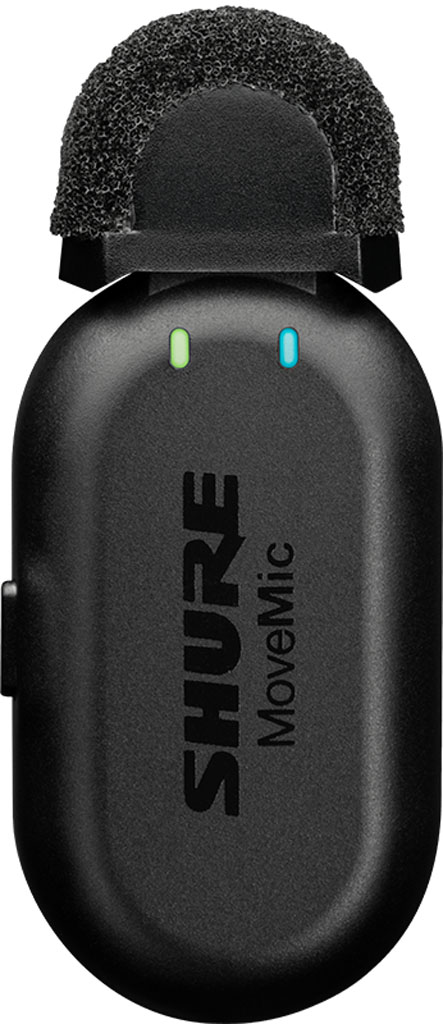
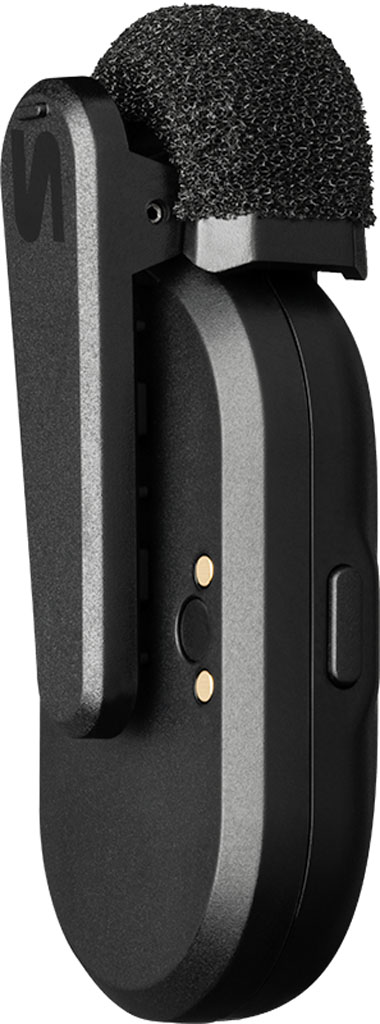
Range on the transmitters is a good 30 metres. The mics charge in a solid metallic case, much like a big AirPods case, which itself charges via USB-C. Battery time is good for eight hours, which I can confirm is quite accurate.
For the workflow I need, just a MoveMic wasn’t going to work, so I took up the option of the MoveMic Two Receiver Kit. This gives you two MoveMics in a charging case, and the MoveMic Receiver. The Receiver can connect directly to a phone, which is my main mode of shooting. You can also mount it on a video camera or DSLR shoe mount and connect via 3.5mm jack. Directly connecting to my iPhone Pro 15 via USB-C meant I could use recording apps of my choice and get all of the control of the MOTIV app on the front panel of the Receiver itself. I’d also get a headphone monitor out, which is essential.
I took delivery of the kit and unboxed in my studio. The design is very ‘consumer friendly’, in that it is reminiscent of opening an Apple product; self-explanatory, and with incredibly simple user instructions. The charging system of USB-C on both mic case and receiver is instantly familiar.
After charging up, I installed the MOTIV Audio app, paired a mic to the app, and had a look at the settings. The interface is again simple and straightforward. I popped on the optional windscreens, backed off the default gain from -30 to -40 after testing what SPL someone enthusiastically shouting might produce, played with the compression, EQ, and noise reduction, and repeated for the second mic. I then disconnected from the phone and paired the mics to the receiver.
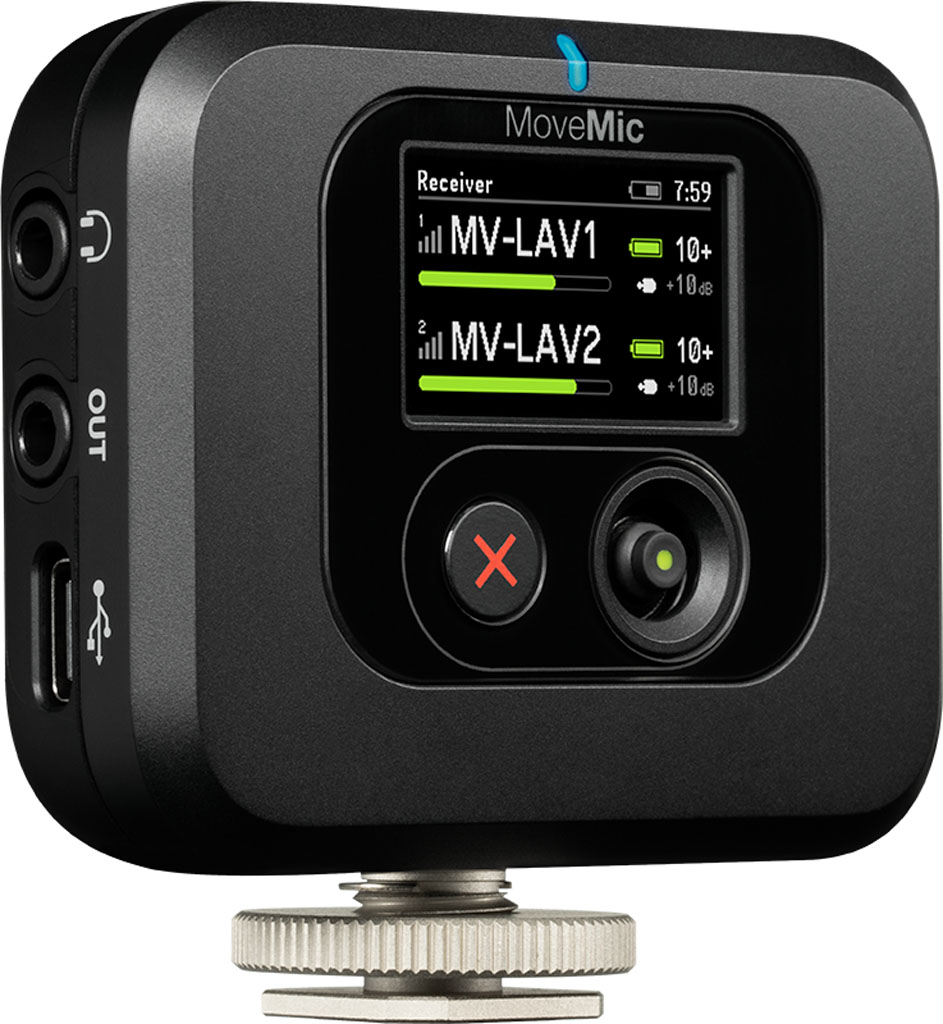
The receiver’s small screen and two simple control buttons are a joy to use, and again, totally intuitive. The receiver pairs with the mics automatically and has clear level meters. Any parameter can be easily changed by entering a menu by clicking the joystick button and moving it up/down/left/right. I made test recordings in my studio with the high pass and noise reduction off, set the rest of the EQ to flat, and the results were perfect. Knowing the environment I was about to go into in the field, I decided to activate noise reduction, and put the high pass on 75Hz (it can also do 150Hz). After some more test recordings, I was comfortable with the results, and prepped to take my kit to the Integrate tradeshow to film a gruelling 40 videos over two eight-hour days.
Over the years, I’ve used almost every type of filming set-up at tradeshows; two of us with a proper broadcast camera on a tripod plus a wired omni handheld, just me with a prosumer video camera on a tripod and a wired lavalier, same again with shoe-mounted shotgun, and an iPhone on a gimbal with wired, wireless and plug-in mics on the Lightning connector. This rig was now my iPhone 15 Pro on a DJI gimbal, USB-C to the receiver sitting in my pocket (the gimbal can’t handle anything but the phone – clipping the receiver to it upset it), and a pair of headphones for monitoring. For recording, if I’m in a hurry (which I was most of the time), I use the video recorder in Apple’s native camera, or if I had time to finesse white balance and ISO, I use the BlackMagic Camera app.
In practice, not having to switch between apps if I wanted to change audio settings was a godsend. People on tradeshow stands are busy. Important international reps and managers are there, and their primary purpose is to get customers, often very large ones, to buy things. You do not want to use any more of their time than is necessary, and you don’t want to waste any of it. The only adjustment I needed to make on the first couple of videos was a little presence peak at 2kHz to cut through the show floor noise, and bring the gain up a touch from my conservative safety setting. Being able to hear exactly what was being captured was a huge relief, as I’ve done this before without monitoring, and it’s nerve- wracking.
The MoveMics worked brilliantly on everyone I put them on; big boomy people, tiny quiet people, and everyone in between. There was barely anything to do to the audio in post.
The noise reduction is incredible; trade show floors are filled with people, music, animated conversations, and the odd inexplicable thud or squeal from someone doing something dumb with audio equipment. The MoveMic noise reduction took care of all of it, with just the right amount of ambience in the background to give sense of place. In the past, that’s taken me at least four audio plugins in post to get right, and a significant amount of time.
Battery time was indeed accurate – by the time 5 pm came around, with an hour to go, the MoveMics had around 15% left in the tank, which you can see on the receiver.
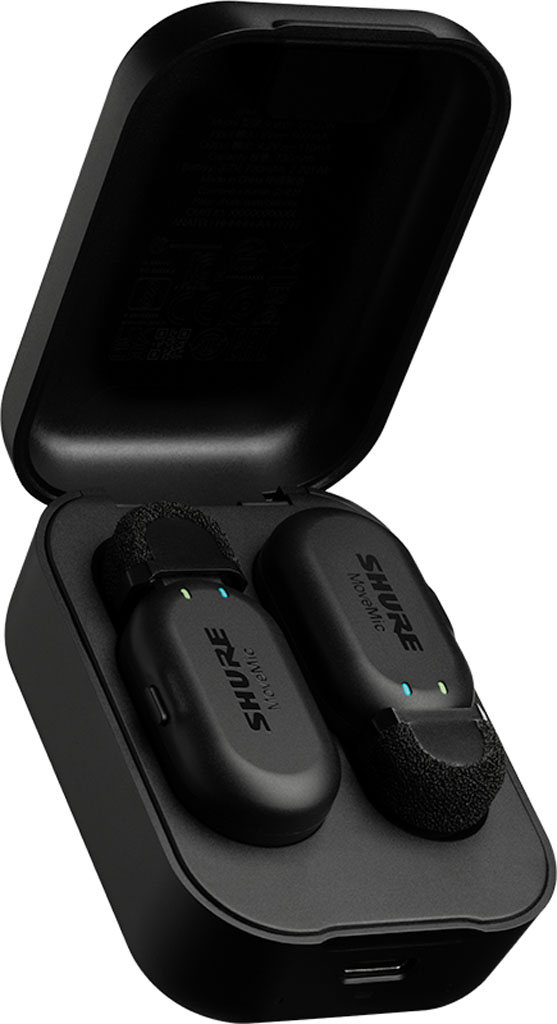
Putting them back in the case for a little while gave me my comfort level of charge back. By contrast, I had to put my gimbal on charge with a powerpack for 20 minutes to get through to show close. I really needed to sit down and rest by that point anyway.
Radio performance was flawless, which is amazing considering that an AV integration tradeshow is possibly the most RF hostile environment you could be in. Everyone’s showing Bluetooth everything, wireless devices of all kinds, and there’s literally hundreds of Wi-Fi access points, all in a big room with metal everywhere. You couldn’t test the MoveMics anywhere worse.
Ironically, the only time I had any dropouts or issues was on the Jands stand, who distribute Shure. I had to film at least five videos on their stand, so looked around to fix the problem.
There was Auracast assisted listening equipment running Low Energy Bluetooth in the same band, plus their own MoveMics. In addition, a full suite of Shure wireless product from across the entire vast product range was on and transmitting. Jands admitted they were having the same issues with their own MoveMics. We turned off Auracast temporarily, shot the videos, and all was well. I defy anyone to even find a wireless environment to match that!
This is how I’m going to do fast-paced location video from now on. I’m going to make a couple of tweaks with the gimbal situation, either going to an ultra-portable tripod or handheld frame, and get the receiver mounted. I can trim down the size of headphones a bit, and pretty much walk anywhere with this kit in a small bag, definitely saving my back compared to the old days of the full camera rig. Definitely the best, simplest, and most importantly, reliable and time-saving audio solution I have ever used.
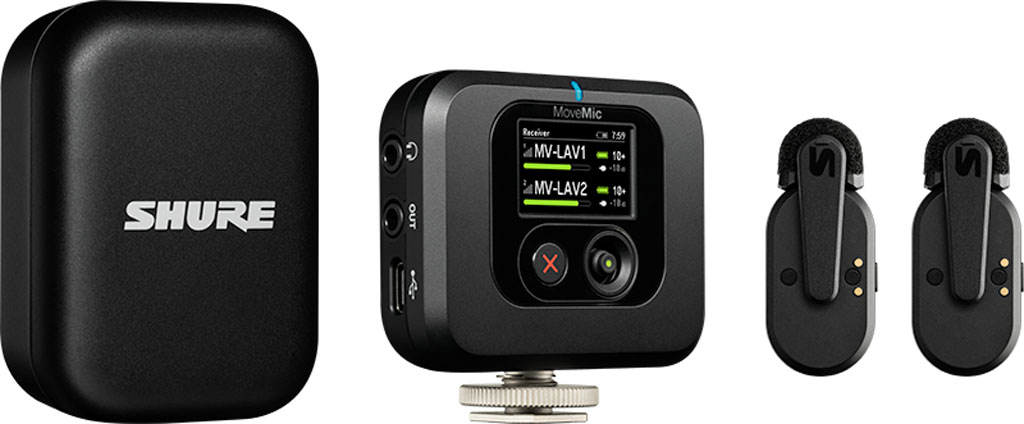
Product Info: www.shure.com Distributor Australia: www.jands.com.au Distributor New Zealand: nsl.co.nz
The MoveMic
- Frequency Response: 50Hz to 20kHz Dynamic Range: 100dB, A-weighted
- Signal-to-Noise Ratio: 68dB SPL, A-weighted
- Equivalent Input Noise: 26dB SPL, A-weighted
- Maximum SPL: 130dB SPL Bit Depth: 24-bit
- Sampling Rate: 48kHz
- Gain Adjustment Range: 0 to 60dB Range: Up to 30m, line of sight
- Radio Frequency Range: 2400MHz to 2483.5MHz, Bluetooth Low Energy and Proprietary
- Dimensions: 46mm x 22mm x 15mm, Net Weight (no windscreen) 8.2g
The MoveMic Receiver
- Frequency Response: 50Hz to 20,000Hz
- Dynamic Range: 100dB, A-weighted
- Signal-to-Noise Ratio: 68dB SPL, A-weighted
- Equivalent Input Noise: 26dB SPL, A-weighted
- Maximum SPL: 130dB SPL Bit Depth: 24-bit
- Sampling Rate: 48kHz
- Gain Adjustment Range: 0 to 60dB
- Minimum Load Impedance (Headphone): 16Ω
- Maximum Headphone Output Level:
- 26.4mW @ 1% THD
- Minimum Load Impedance (Camera Out): 2kΩ
- Maximum Camera Output Level (Mic):
- -26dBV
- Maximum Camera Output Level (Line):
- -8.3dBV
- Range: Up to 30m, line of sight
- Radio Frequency Range: 2400MHz to 2483.5MHz
- Dimensions: 52.8 x 67 x 19mm (H x W x D), Weight 81g
Subscribe
Published monthly since 1991, our famous AV industry magazine is free for download or pay for print. Subscribers also receive CX News, our free weekly email with the latest industry news and jobs.





